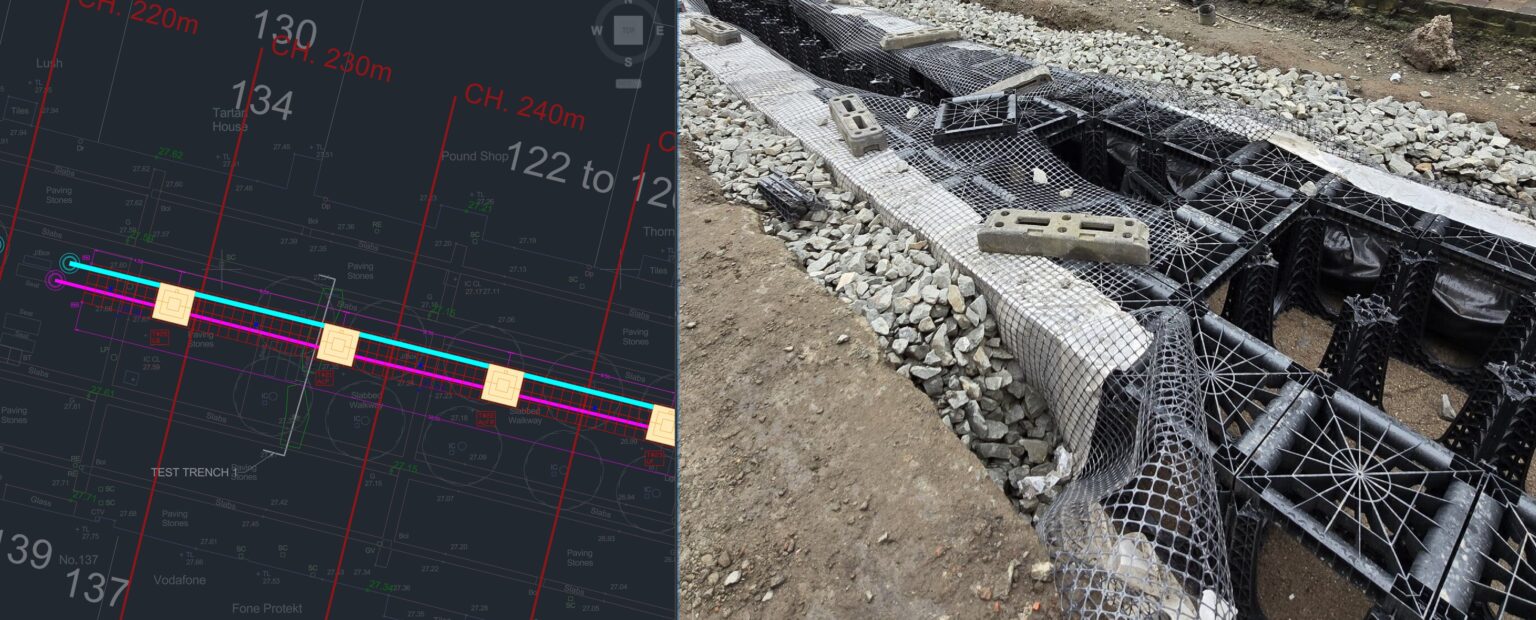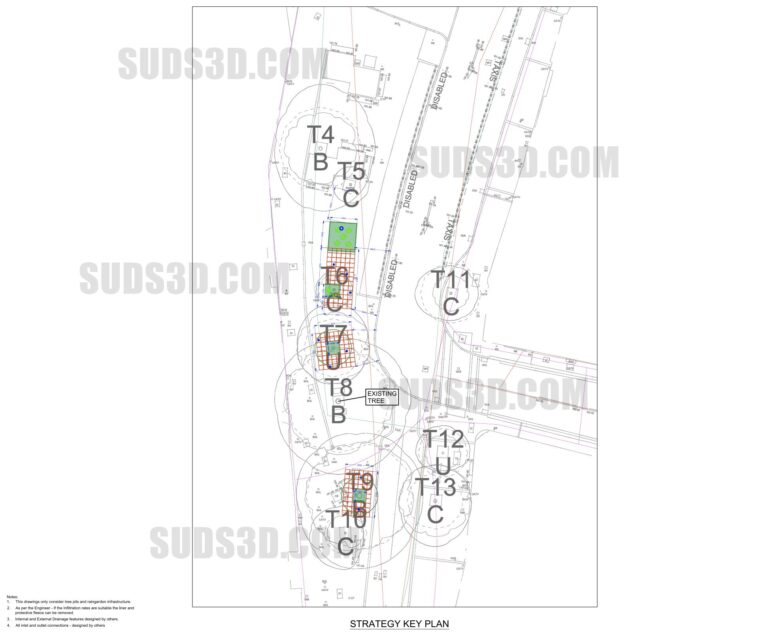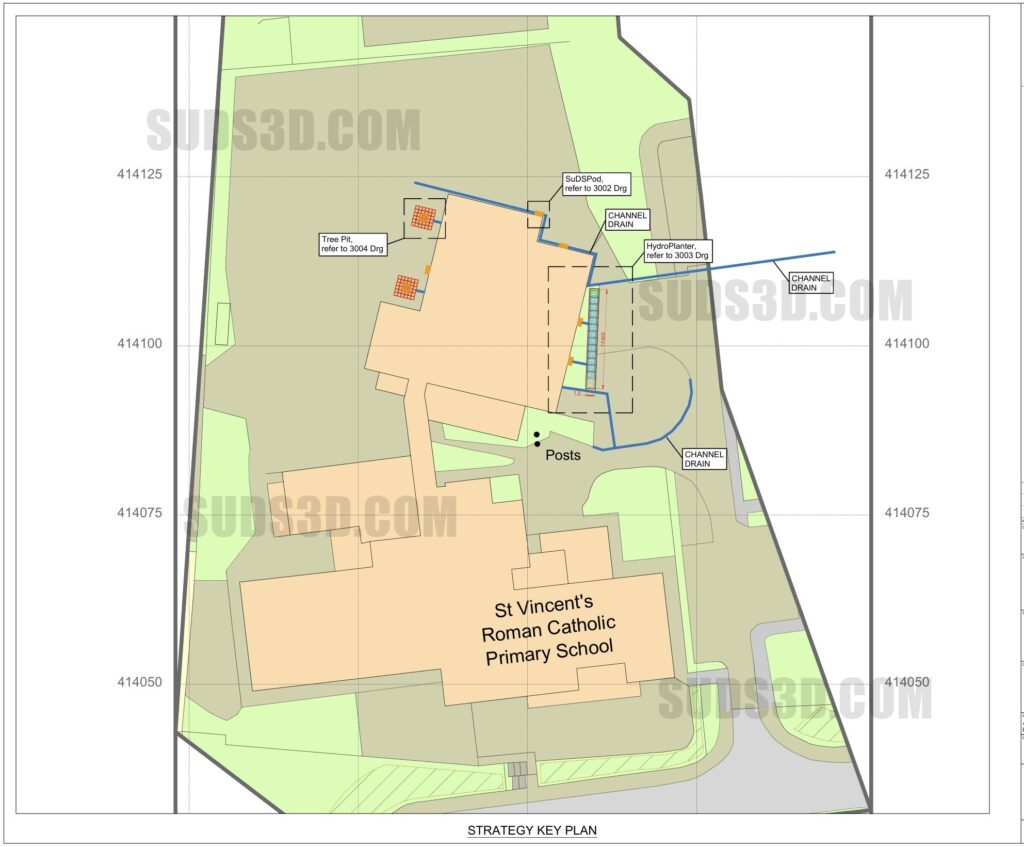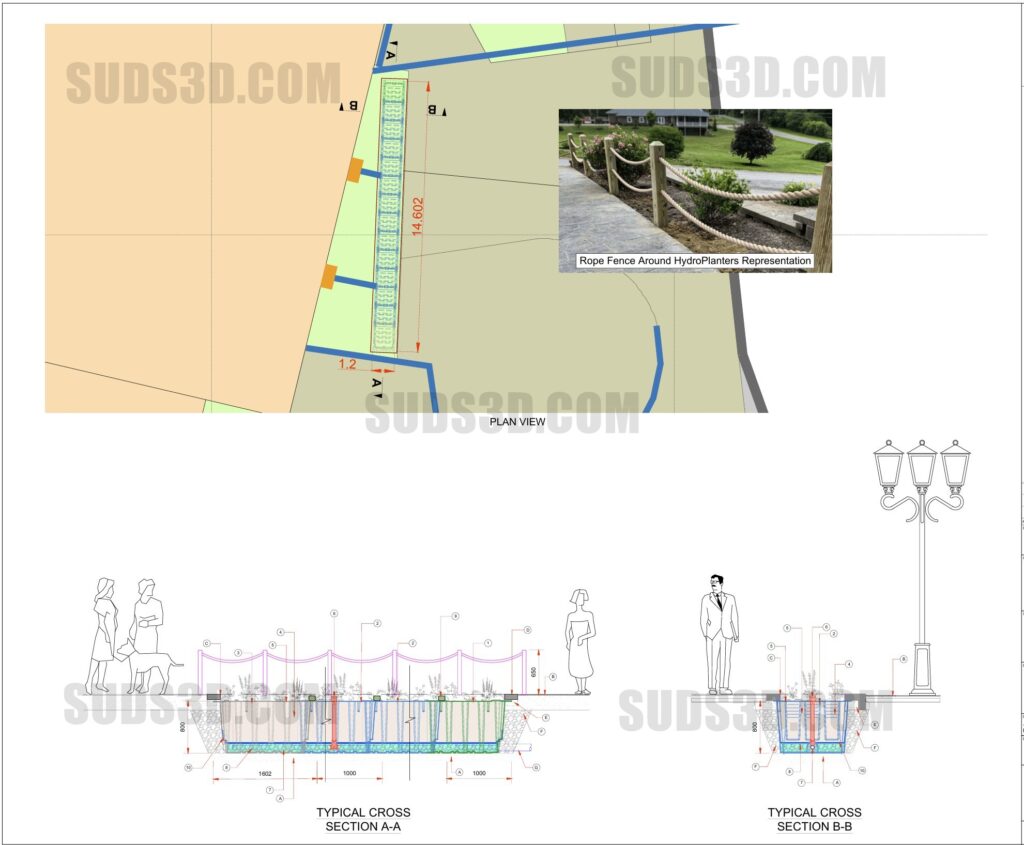Design and Installation of Sustainable Urban Drainage Systems (SUDS)

Sustainable Urban Drainage Systems (SUDS) require careful design and meticulous installation to ensure long-term performance, flood mitigation, and environmental benefits. This article provides comprehensive guidance on the principles of SUDS design, technical standards, essential calculations, and practical installation aspects. Tailored for engineers, architects, and developers, it draws on best practices to help integrate SUDS seamlessly into urban projects, promoting resilient and sustainable development.
Principles of SUDS Design
SUDS design is guided by the SuDS Triangle – balancing water Quantity (flood control), Quality (pollution reduction), Amenity (public benefits), and Ecology (biodiversity enhancement). The core principle is to mimic natural hydrological processes, prioritizing infiltration, evaporation, and transpiration over conveyance.
Key Design Steps:
- Site Assessment: Evaluate soil permeability (via percolation tests), topography, groundwater levels, land use, and climate data. Use tools like GIS for flood risk mapping.
- Treatment Train Approach: Sequence components (e.g., swales → detention basins → wetlands) to progressively treat water.
- Multi-Functionality: Design SUDS to serve dual purposes, such as permeable pavements for parking that also attenuate runoff.
- Scalability: Adapt to site constraints—roof-based for dense urban areas, ground-based for greenfield developments.
Best Practice Tip: Incorporate stakeholder input early to align with local policies and community needs.
Technical Standards and Compliance
Adhering to standards ensures SUDS durability and regulatory approval. In the UK, the CIRIA SUDS Manual (C753, 2015) is the primary reference, outlining design criteria for over 20 SUDS components. Internationally, align with BS 8582:2013 for infiltration systems and EU Water Framework Directive for quality standards.
Key Standards Overview:
| Standard/Document | Focus Area | Key Requirements |
|---|---|---|
| CIRIA C753 | Overall Design | 80% reduction in runoff rate; source control priority. |
| BS EN 752 | Drainage Systems | Minimum infiltration rates (e.g., 10⁻⁵ m/s for permeable pavements). |
| NPPF (UK) | Flood Risk | SUDS mandatory for developments >1 ha; Sequential Test for vulnerability. |
| ISO 14001 | Environmental Management | Lifecycle assessment for materials and maintenance. |
Compliance Checklist:
- Conduct Flood Risk Assessment (FRA) per PPG25.
- Ensure accessibility for maintenance (e.g., 1:6 slopes for swales).
- Verify materials’ hydraulic conductivity (e.g., ASTM standards for geotextiles).
Non-compliance can lead to liabilities; always consult local authorities for site-specific approvals.
Essential Calculations for SUDS
Accurate calculations are critical for sizing components and verifying performance. Use hydrological models like MicroDrainage, InfoWorks ICM, or EPA SWMM for simulations.
Table of Typical Values:
| SUDS Type | Runoff Reduction (%) | Pollutant Removal (%) |
|---|---|---|
| Permeable Pavement | 50-90 | 70-90 (TSS) |
| Swale | 30-50 | 40-60 |
| Detention Basin | 70-100 | 20-50 |
Validate with sensitivity analysis for climate change scenarios (+20% rainfall by 2050).
Practical Aspects of Installation
Installation transforms designs into functional systems, requiring coordination between disciplines.
Phased Approach:
- Pre-Installation: Clear site, excavate to design levels, install geotextiles/sub-base.
- Construction: Layer materials sequentially (e.g., for permeable pavements: sub-base → porous asphalt). Use compaction equipment sparingly to maintain permeability.
- Commissioning: Flood test components; monitor initial performance.
- Handover: Provide O&M manual with schedules (e.g., annual inspections).
Materials and Techniques:
- Geotextiles: Non-woven, 100-200 g/m² for filtration.
- Aggregates: Clean, graded (10-20 mm for sub-base).
- Vegetation: Native species for low-maintenance (e.g., Carex for swales).
Common Pitfalls and Solutions:
- Clogging: Use pre-treatment filters; avoid fine sediments.
- Uneven Settlement: Compact in lifts <300 mm.
- Cost Overruns: Prefabricate modular elements for complex sites.
Engage certified contractors (e.g., via ICE or CIRIA networks) and budget 10-15% for contingencies.
Best Practices for Success
- Integrated Design: Collaborate via BIM for holistic modeling.
- Adaptive Management: Install sensors for real-time monitoring.
- Sustainability Metrics: Aim for BREEAM credits (e.g., 10% for SUDS integration).
- Case Integration: Reference projects like Augustenborg (Sweden) for retrofit lessons.
Effective SUDS design and installation demand a blend of scientific rigor, regulatory adherence, and practical execution. By following these principles, standards, calculations, and best practices, professionals can deliver systems that not only manage water but also enhance urban livability. For tailored advice, consult the latest CIRIA updates or local experts to navigate evolving challenges like urbanization and climate variability.







